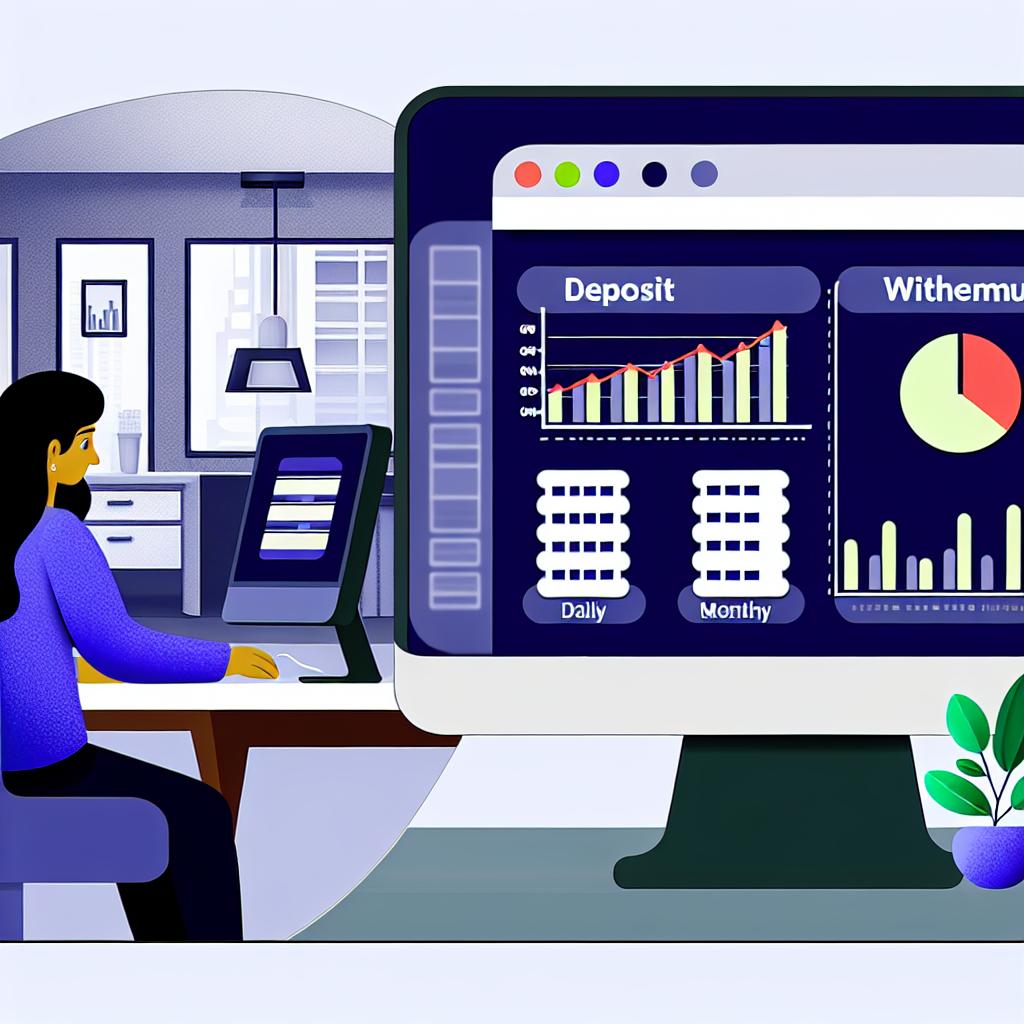Understanding Your Deposit and Withdrawal History
Tracking your deposit and withdrawal history is an important aspect of effective financial management. Maintaining a clear record of these transactions can lend transparency to your financial activities, assist you in budgeting, and help you identify any discrepancies or unauthorized activities. Here, we will delve into various methods to accurately record your financial transactions.
Online Banking Platforms
A multitude of financial institutions offer comprehensive tools for monitoring your transactions through their online banking platforms. By logging into your bank’s website or mobile application, you can gain easy access to a detailed history of your deposits and withdrawals. This information is typically found under sections titled “Transaction History” or “Account Activity.”
Online banking platforms frequently provide filters that allow you to sort through transactions. You can categorize your data by date, transaction type, or amount, making it more efficient to track your finances. These features make it simpler to observe trends and maintain control over your accounts.
Setting Up Alerts
To further enhance your tracking ability, consider utilizing alert systems through your financial institution. Most banks allow users to set up notifications via email or SMS whenever a transaction takes place. Such alerts help you stay informed about your account activity and add a layer of security by notifying you of any unauthorized transactions immediately. This proactive approach keeps you engaged with your financial information and averts potential issues before they escalate.
Financial Management Apps
There is an increasing number of third-party financial management apps available that can synchronize with your bank accounts. These apps provide comprehensive tools for tracking and categorizing your transaction history effectively. Applications such as Mint and YNAB offer user-friendly interfaces and real-time updates, allowing you to manage deposits and withdrawals across multiple accounts from a single, unified platform.
Creating Custom Reports
Many of these applications allow users to generate custom reports, providing a visual representation of your financial behavior over time. These reports can be incredibly useful in analyzing spending habits and making well-informed decisions regarding your finances. By examining these insights, you can strategize effectively and adopt an approach that aligns with your financial goals.
Manual Tracking
While digital tools provide convenience, some individuals prefer the tangible nature of manual tracking. Maintaining a financial ledger—whether it’s digital or on paper—where you can record each deposit and withdrawal offers a personalized approach to managing your financial activities.
Reconciling Accounts
It is advisable to regularly reconcile your ledger with your bank statements—either monthly or more frequently. Doing so ensures accuracy and helps you catch mistakes or discrepancies. This practice not only promotes precision in your financial tracking but also enhances your financial awareness and responsibility. Watching your recorded transactions against official statements offers peace of mind and heightened control over your financial world.
Regularly Reviewing Statements
Making a habit of regularly reviewing your bank statements is a prudent financial practice. These documents provide a comprehensive overview of your account activity and can often be accessed either electronically or received through traditional mail. By reviewing your statements periodically, you can spot potential errors, assess charges, and ensure that your transactions align with those in your personal records.
Understanding Fees and Charges
It’s critical to pay attention to any fees or charges listed in your bank statements. Understanding the reasons behind these costs can offer insights into potential areas for cost savings or necessary adjustments in your account management strategies. By being aware of these fees, you can develop a stronger grasp of your financial status and work towards minimizing unnecessary expenses.
Conclusion
Effectively tracking your deposit and withdrawal history is a critical component of comprehensive financial management. By employing a combination of online banking tools, third-party financial management apps, manual tracking methods, and regular reviews of your statements, you can maintain accuracy and security in your financial activities. This multifaceted approach ensures that you stay informed and in control of your finances, fostering a stable financial environment where you can make informed decisions and strive towards achieving your financial objectives.

